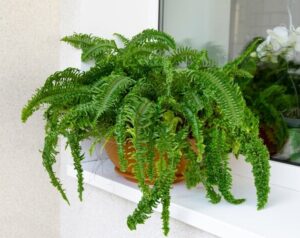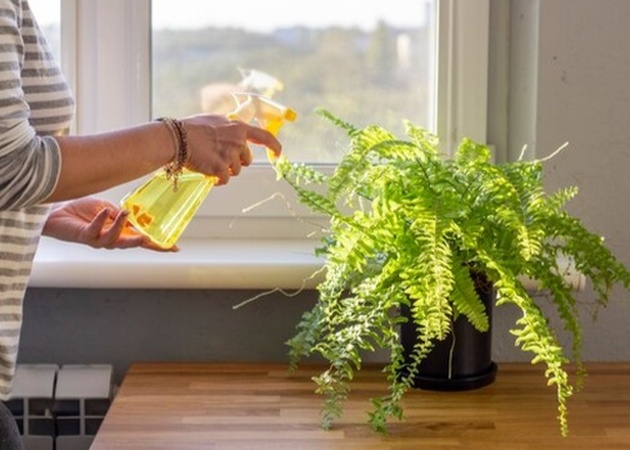Growing a house fern can be a rewarding experience, as ferns add lush greenery to your indoor space. Here are some tips to help you keep your fern healthy and thriving:
1. Light
- Indirect Light: Most ferns prefer bright, indirect light. Place your fern near a window with filtered sunlight or use sheer curtains to diffuse the light. Avoid direct sunlight, which can scorch the leaves.
2. Temperature and Humidity
- Temperature: Ferns generally prefer cooler temperatures, around 60-75°F (15-24°C). Avoid placing them near drafts, heaters, or air conditioning vents.
- Humidity: Ferns thrive in high humidity. To increase humidity, you can mist your fern regularly, use a humidity tray, or place a humidifier nearby. Bathrooms and kitchens can be ideal locations due to naturally higher humidity levels.
3. Watering
- Consistent Moisture: Keep the soil consistently moist but not waterlogged. Water when the top inch of soil feels dry. Ferns dislike being too dry or too wet, so balance is key.
- Water Quality: Use room-temperature water, and if possible, avoid hard water which can cause mineral buildup.
4. Soil
- Well-Draining Soil: Use a well-draining potting mix, preferably one designed for ferns or houseplants. Ferns like soil that retains moisture but also drains well.
5. Fertilizing
- Moderate Feeding: During the growing season (spring and summer), fertilize your fern every 4-6 weeks with a balanced, diluted houseplant fertilizer. Reduce feeding in fall and winter.
6. Pruning and Grooming
- Remove Dead or Yellow Leaves: Regularly prune away dead or yellowing fronds to encourage new growth and maintain the plant’s appearance.
- Cleaning: Wipe the leaves gently with a damp cloth to remove dust and keep the plant healthy.
 7. Repotting
7. Repotting
- Repot When Necessary: Ferns may need repotting every 1-2 years, depending on their growth. Choose a slightly larger pot with good drainage.
8. Pest Management
- Check for Pests: Regularly inspect your fern for pests like spider mites, aphids, or mealybugs. If pests are found, treat them promptly with insecticidal soap or neem oil.
9. Variety-Specific Care
- Know Your Fern: Different fern species may have slightly different care requirements. Research the specific needs of your fern variety to provide optimal care.
By following these tips, you can create a suitable environment for your fern to flourish indoors.

